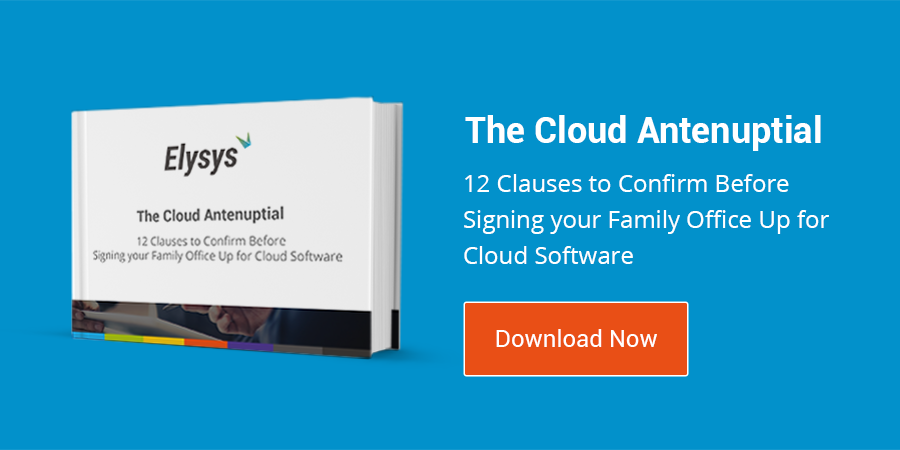Does your wealth management team deserve better digital tools? Read on
In their 2016 World Wealth Report, Cap Gemini asked participators about “the drivers for their interest in and adoption of digital tools in their wealth management practice”. The second highest ranked response was “the ability to work on-the-go through remote log-ins on their workstation”.
71.3% of the under the age of 40 participants selected this driver as their first choice. What is even more amazing is that 81% of CTO’s over the age of 60 listed the need for remote working abilities as their second choice. One would have thought that the ‘older generation’ would be more reluctant to resort to such working methods.
The practice of remote network management is usually the domain of helpdesk IT administrators and not one encouraged for normal users in secure enterprise environments. This begs the question of why a CTO would consider granting wealth management employees remote access through remote workstation access.
I suspect that the answer to the question lies in the same report. In the Executive Summary, the authors conclude that “Digital Maturity Remains Elusive Goal”. It goes on to say that, “wealth managers have joined HNWIs in expressing demand for digital tools, but they are not fully satisfied with the digital tools their firms provide”.
User Needs vs. Management’s Policies
In earlier days, remote work was simply denounced by management, banging the cloud safety drum in support of their policies. As a result of the digital transformation of wealth management this is no longer an option, and managers are increasingly acknowledging the importance of responding to employees’ appeals for tools that enable them to work remotely, in some fashion.
Why the shift in response? Well, with a growing number of organisations providing remote work opportunities, HR departments risk losing valuable staff because they are prohibited from working from home, whether occasionally or on a pre-arranged basis.
A Win-win for Employees and Management
So, what are options available to wealth managers for promoting employee satisfaction while ensuring work productivity?
Option 1: Create a private cloud hosted in-house, and allow access to employees from outside the office
The provision of a private cloud (hosted in-house) in a wealth management organisation will have the following benefits:
- The data and file servers remain under the custody of the IT department.
- Users can optionally work within the office boundaries or from an external location.
- By installing remote secure client applications on specific equipment, security and access control is improved.
- Users can only access selected processes and workflows, minimising security concerns.
The disadvantages of such a solution are:
- IT department costs increase because of the need to support additional infrastructure and resources.
- Software costs are unchanged because On Premise licenses are still required.
- Tracking and updating of new software versions remain an issue.
Option 2: Create a private cloud hosted externally and allow access to employees from outside the office
The matter of location, or where to host a private cloud, is an important consideration in this scenario. A number of hosting environments exist today ranging from the cross-border service providers, e.g. Amazon Web Services, Microsoft’s Azure or the vendor’s proprietary platform to the localised country specific providers. Costs will vary between these choices, and the vendor should be able to provide comparative figures on request. On the other hand, the vendor should be flexible enough to allow the client to choose a hosting platform, always bearing in mind that the control and responsibility for the environment will be under the vendor’s control.
The benefits of an externally hosted private cloud solution are:
- Users have the options of working within the office boundaries or from an external location.
- IT and infrastructure costs are significantly reduced.
The disadvantages in this scenario are:
- Data storage is moved outside the organisation.
- Licenses still need to be purchased.
- Software maintenance and uptime are the wealth manager’s responsibility.
Option 3: SaaS adoption – vendor provides hosted solution
Particularly for the individual investor and the head of the small single-family office, it is necessary to keep infrastructure and staff expenditure to a bare minimum. For these scenarios, and where financial organisations wish to maintain a low total cost of ownership, employing software solutions within an SaaS model is the ideal solution.
By adopting SaaS solutions your family office gains:
- Enterprise level financial accounting and wealth management solutions at a pay-for-what-you-use fee (per user, per month).
- Secure data storage without having to spend on the installation and maintenance of an on-premise data centre.
- Access to end user support without an in-house IT team.
- Network and software maintenance and upgrades, disaster recovery and security policy implementation without an in-house network manager.
Exploring SaaS for Wealth Management
To conclude, there are many options available to wealth management companies wishing to digitally empower their employees to work remotely without compromising on productivity.
Are you ready to explore the possibilities of Cloud based software for your family office? Download our free ebook now to assist you in finding the Cloud solution that suits your business needs best.
